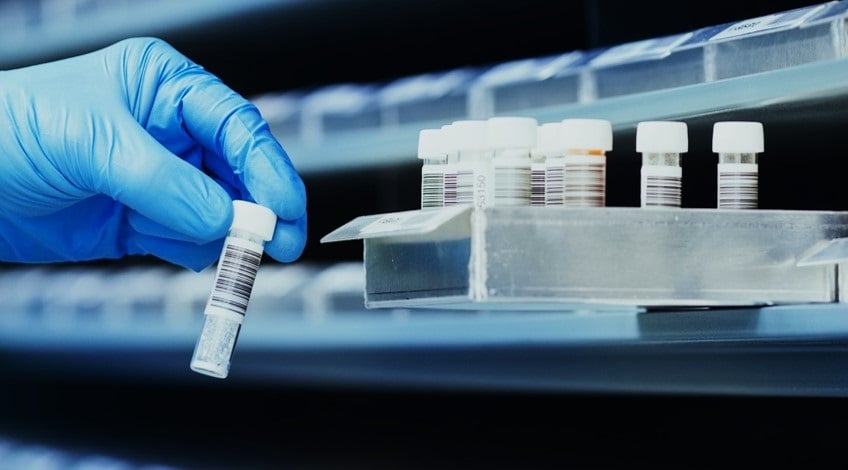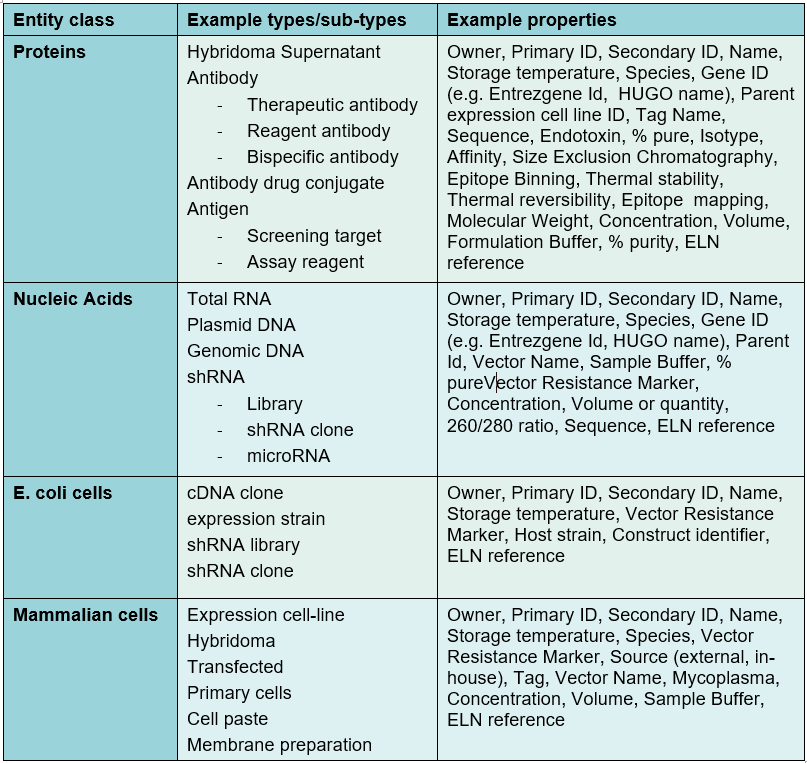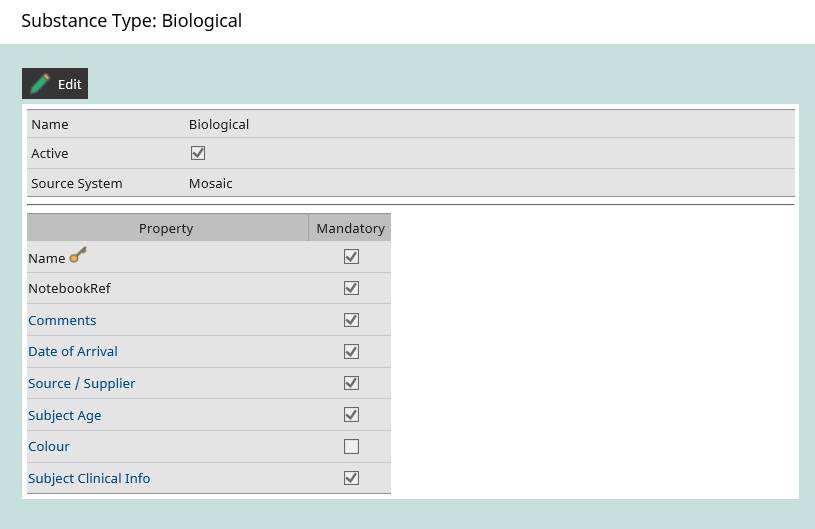Inventory management challenges arise not from processing samples in high throughput, but from the handling the diverse quantity of data that is required to be tracked for each biospecimen.
Additionally, small companies may also be constrained by the available funding for selecting a robust choice for data handling and sample management.
Five common problems encountered when managing biological specimens are:
- Access to your inventory data
- Cost constraints leading to compromised product choices
- Coping with biospecimen registration
- Inefficient tracking of storage locations compromising retrieval efficiency and productivity
- Connecting data to each biospecimen
This blog discusses various ways of addressing each topic.

1. Improving inventory data access
When using spreadsheets to track biospecimens, scientists experience:
- Difficulty getting access to the master file (including knowing the correct location and version of the data)
- The inability to search the inventory for key terms
- The inability to support multiple users needing to make updates at once
- Introduction of manual data logging errors
- Insufficient flexibility; meaning different spreadsheets (perhaps having different formats) are used by different people
When working with spreadsheets the most common complaint is that the spreadsheet is out of date. This is to be expected since, without instant, easy access to the spreadsheet for all users, the data will always be out of date. If multiple spreadsheets exist to suit different individual needs, then all the data is not where it is needed. Without up to date, accurate information lab work becomes inefficient and data quality suffers. Worse, if samples are not tracked with confidence, important samples can get lost, as illustrated in this cautionary video.
What is needed is a web interface to provide instant, easy access to a central inventory database which incorporates user authentication and control to automatically log who did what and when. This removes the burden of data entry from scientists, provides an audit trail, improves data quality and is more efficient for individual use as well as across research teams.
Often overlooked are the workflow improvements offered by good search tools. These tools can allow inventory contents to be queried by a wide choice of parameters, including biospecimen properties and scientific terms, rather than solely by a specimen’s barcode.
2. Cost constraints leading to compromised product choices
When most small companies review specialist inventory systems or full-blown sample management LIMS, they conclude these are too expensive in the early stages and fall back on spreadsheets. However, the rise of SaaS (software as a service) offerings means that good quality inventory management tools are very affordable – even for small companies with small inventories and low throughputs.
Although spreadsheets initially look like a cheap option, they do not usually have the flexibility to manage everyone’s materials, containers and stores. This is particularly true when managing biological samples due to the need to track cell growth passages, derivatives, expiry dates, usage consent, and so on. This makes it particularly likely that one spreadsheet will not suit everyone. It also increases the time and costs required to design, program, test, support, extend and keep up to date in-house spreadsheets.
Finally, there is the question of audit trail and compliance. Working with clinical samples places greater responsibilities on firms to monitor usage of these biospecimens that an in-house spreadsheet may not be able to meet.
The question to be answered is ‘is biospecimen inventory software cost-effective for me?’ Here, SaaS has changed the arithmetic:
- The hardware requirements are extremely low: you don’t need to buy and support a server farm, you can simply rent Cloud space
- The subscription costs are very low and the set-up is extremely simple – just put a software image on your web servers either on-premise, or in the Cloud
- It also means you don’t need an IT department to install, upgrade or maintain your software
- Several systems, such as Titian’s Mosaic FreezerManagement software, are scalable and can grow with your emerging needs
3. Coping with biospecimen registration
Boehringer Ingelheim have said: “Biological registration and management is probably more complicated than one may think due to the diversity of sample types and non-universal standard in naming and identifiers.”
One of the biggest problems for any biotech is setting up their inventory data fields to cope with the flexibility needed. The number of biospecimens handled may be small but there are a wide variety of types and sub-types: a project might start with primary cell lines, registering different passages, then extracting DNA. Another project might use RNA; or blood, plasma and other biological derivatives. Beyond this, each sample type has a range of properties which are not necessarily used for other sample types. See the table below for a selection:

A related issue is that for each sample type, there are a variety of names and identifiers in use. There are standard ways of representing nucleic acids and proteins at the sequence level but, beyond this, the characterisation information becomes complex and variable.
These are significant problems to handle satisfactorily in a spreadsheet. In fact, it is common to encounter multiple registration systems in use for different sample types. However, this will mean that sample tracking and audit trails are almost certainly compromised by the difficulty in connecting back to the correct registration system, and an inability to search the whole inventory for a particular specimen.
Mosaic FreezerManagement software handles these issues through a Substance Type Editor (STE), which makes Mosaic as flexible as needed. It allows users to create new substance types whenever necessary, as the project or company evolves. There is no need to bring in a developer, or to write a new macro, or start a new spreadsheet.
The Substance Type Editor also allows you add more properties, freeing you up to add more information as you need it. Substance properties are configurable, so any required property can be added at any time. You can specify which properties are displayed by substance type, and whether those properties are optional or mandatory. The types and properties are also searchable, thus easy to access.

The Mosaic software also offers a flexible approach to meet the needs of different companies. The software is modular, so that if the company wishes to integrate automated instrumentation into the process, or if sample order requests are needed to be managed across different sites, new software modules can be added to address these needs.
4. Improving sample integrity by tracking storage locations
To avoid sample integrity problems from freezers being kept open too long, a user needs to be able to go straight to the exact shelf where the biospecimen is kept.
For this, your inventory software should be able to model the layout of your freezers – racks, boxes and shelves – as well as track which biospecimen is kept where. Ideally, the software should also support rules so that certain types of biospecimens are only stored in appropriate locations, at appropriate temperatures.
Using inventory management software, such as Mosaic, also has the advantage over spreadsheets that freeze/thaw cycles and expiry dates are automatically tracked as part of the sample data.
These issues are covered in our blog on optimising the use of manual freezers.
5. Connecting data to each biospecimen
Of course, it is necessary for samples to be labelled for proper identification, but it is not feasible to incorporate all of the information stored about a particular sample on the label. What is needed is a system that can use a sample’s identifying label to connect to all the data held about the sample. Inventory tracking software or sample management LIMS are excellent at making this connection effortless. For example, when a barcode label is scanned in Mosaic FreezerManagement software, it will display the sample name and its properties, the sample amount, how many freeze/thaws it has gone through, as well as much more information.
However, especially in the case of human biological samples, displaying some human-readable information as well as a barcode on a label is essential. For instance, you need to be able to see that it is a human sample – or differentiate between proteins, DNA, or primary cells – and possibly display hazard codes as well. This requires labels to be easily customised to the needs of a company, group or project.
Handling labelling sounds trivial, but it is an essential part of tracing biospecimens and not always easy to connect to an spreadsheet developed in-house. In Mosaic FreezerManagement, this is integrated so that custom labels with selected data can be printed without leaving the application.
Small steps give big gains
In summary, although issues of inventory access, storage, searching, naming and labelling are considered to be minor, they underlie big efficiency gains. Cost is a concern, especially for small companies. However, while the costs of in-house spreadsheets are usually ignored, their failings in accessibility, flexibility and security are quickly apparent. When handling biospecimens, the small monthly fee for a specialist inventory system is far outweighed by multiple benefits that include web-based access, search tools, sample registration, integrated labelling, a permissions system defining levels of user access and the peace of mind of a CFR 21 Part 11 compliant audit trail.
Small companies, with small budgets to cover IT and equipment needs, will see bigger returns and smoother operations by addressing issues around biospecimen tracking and inventory management from an early stage. You have the opportunity to create the basis for smooth growth to future success – and fewer distractions from the science that needs to be done to achieve it.
Want to know more?
Watch our webinar: Mosaic FreezerManagement - quickly transform the way you track and manage your samples
